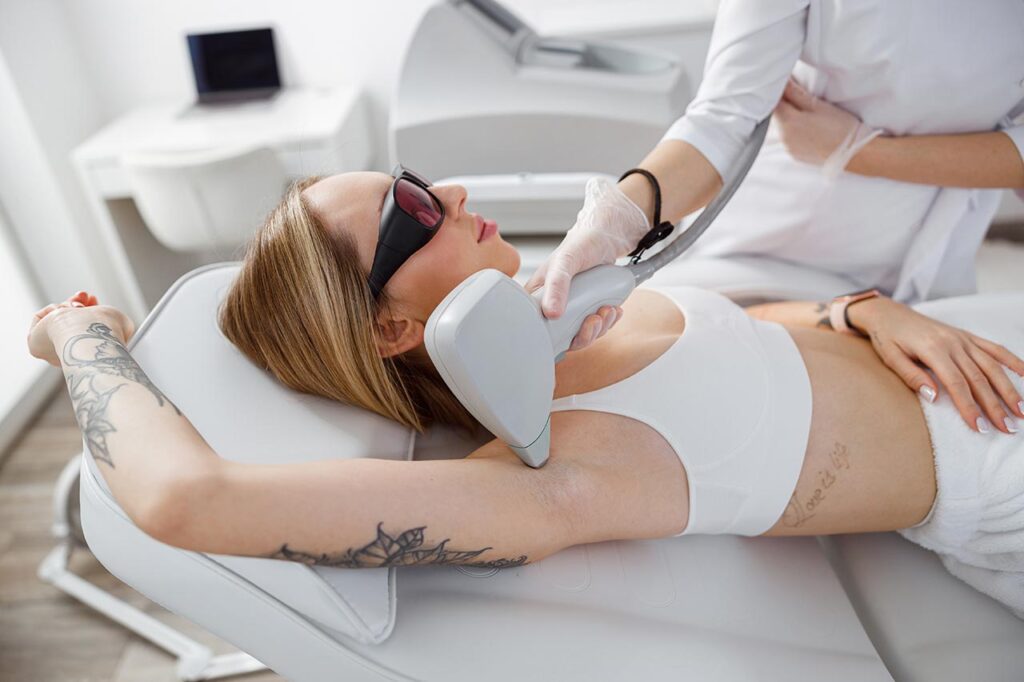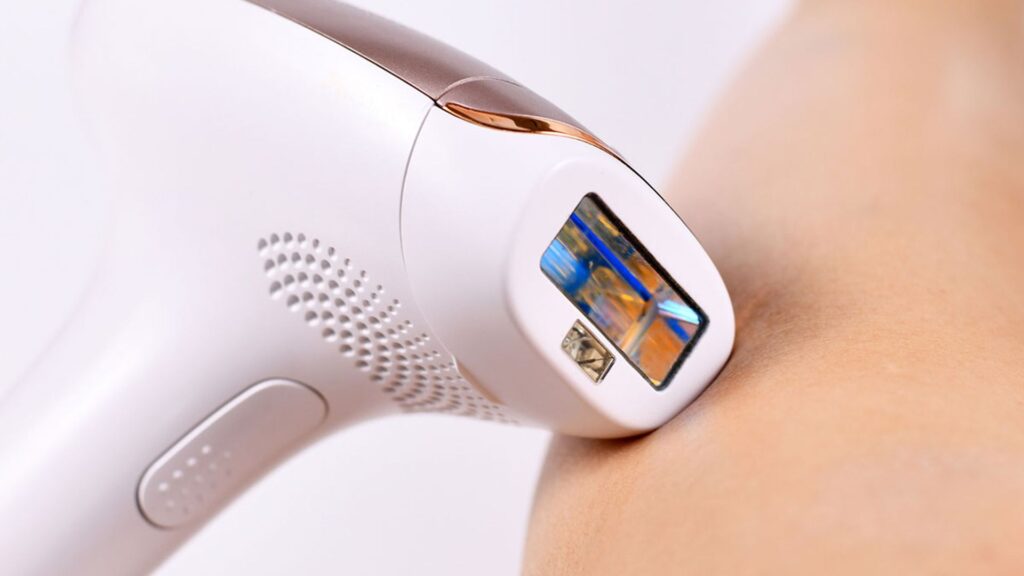
Laser Hair Removal Machines: How They Actually Work
Laser hair removal has gained immense popularity due to its effectiveness and convenience.
At-home laser hair removal devices have made this advanced technology accessible to everyone.
Let us talk about them.
Types of Laser Hair Removal Devices

Before anything else, we should understand the different types.
Laser vs. Intense Pulsed Light (IPL)
Laser and Intense Pulsed Light (IPL) devices are the two main types of hair removal technologies. Lasers emit a single wavelength of light that targets melanin, making them highly effective and precise.
IPL devices, on the other hand, use a broad spectrum of light, which is less focused but can cover larger areas more quickly. Each technology has its advantages: lasers offer more precision and effectiveness, especially for darker hair, while IPL is often more affordable and suitable for larger treatment areas.
Professional vs. At-Home Devices
Professional laser hair removal devices are typically more powerful and precise compared to at-home models.
They are capable of delivering higher energy levels, resulting in faster and more effective treatments. However, professional treatments can be expensive and require multiple sessions.
At-home devices, while less powerful, offer the convenience of performing treatments at your own pace and in the comfort of your home.
They are designed with safety features to minimize risks and are suitable for maintaining results between professional sessions or for treating less stubborn hair.
Effectiveness of Laser Hair Removal

The effectiveness is of the utmost importance. Measuring it isn’t always easy, but here is our breakdown:
Expected Results and Timeline
The effectiveness of laser hair removal varies, but most people see significant results after a series of treatments. Typically, 6 to 8 sessions are required to achieve noticeable hair reduction.
These sessions are usually spaced 4 to 6 weeks apart to align with the hair growth cycle. Consistency is crucial, as skipping sessions can delay results. Patients can expect a 70-90% reduction in hair growth, with remaining hair becoming finer and lighter.
Factors Affecting Effectiveness
Several factors influence the effectiveness of laser hair removal, including skin tone and hair color. The treatment is most effective for individuals with light skin and dark hair because the contrast allows the laser to target the melanin in the hair follicle more precisely.
Additionally, using FDA-approved devices ensures that the equipment meets safety and efficacy standards. It’s essential to follow the manufacturer’s instructions and seek professional advice to achieve the best results.
Safety and Side Effects

Laser hair removal is generally safe, but it can cause side effects. Common issues include skin irritation, temporary redness, and minor swelling around the treatment area.
Changes in skin pigmentation, such as lightening or darkening, can also occur, especially in individuals with darker skin tones. In rare cases, burns or blisters may develop if the device is used incorrectly or if the skin is overly sensitive.
To minimize risks, it’s important to follow safety precautions. Always perform a patch test to ensure your skin reacts well to the treatment. Adhere strictly to the device’s instructions, and avoid sun exposure before and after sessions to prevent pigmentation changes.
Proper aftercare, such as using soothing creams and avoiding harsh skincare products, can help maintain skin health. For those with darker skin tones, choosing devices specifically designed for their skin type can reduce the risk of side effects.